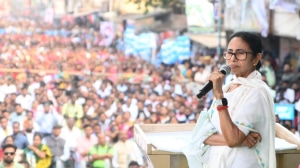Stay updated with the latest - Click here to follow us on Instagram
Is your child allergic to wheat?
In what could come as a surprise for many,almost 30 per cent of children visiting the paediatrics department of GMCH-32 are allergic to the most common cereal in the Indian diet-wheat!
In what could come as a surprise for many,almost 30 per cent of children visiting the paediatrics department of GMCH-32 are allergic to the most common cereal in the Indian diet wheat! What further complicates the matter is that 50 per cent of those diagnosed with this allergy are also afflicted with juvenile diabetes.
According to figures available with the hospital,around ten patients suffering from gluten enteropathy are referred to the Nutrition department every month. In the disease,also called celiac sprue,the absorption of food nutrients through the small intestine is impaired by an immune (allergic) reaction to gluten,a protein found in wheat or related grains and many other foods.
Allergy to wheat has become very common among children in the age group of 6-12 years. What makes matters difficult is the lack of awareness among parents. Since wheat is the staple diet of most Indian homes,the idea of being allergic to it does not cross the minds of parents, says Dr Madhu Arora,senior dietician at GMCH-32.
It is only after the child continues to lose weight and a few tests that parents come to know about a celiac disorder, she adds.
Meanwhile,a big challenge for the dieticians is to chalk out the diet plan of a child suffering from juvenile diabetes. It is not difficult to draw a diet for a child allergic to wheat as there are various substitutes available like rice and gram flour. But giving the right food in the right quantity to diabetic children is easier said than done. As they cannot be given too much carbohydrates,the fibre content in their diet is included only in traces. Due to this,their nutrition levels go for a toss, Arora warns.
Food and nutrition expert Nisha Minocha agrees,Maintaining the sugar level of juvenile diabetics is of utmost important as most of them are insulin-dependent. Lack of carbohydrates in the diet also makes the child anaemic in the long run. Hence,the diet given to them is low on calorie but rich in protein . Fruits rich in sugar like mango and chikoo too are avoided.
Giving a word of advice to parents,doctors tell them to take care of the psychological impact of the disorder.
Children often feel left out when they are unable to eat what others are eating. Hence,parents should try to bring a novelty to their meals. Instead of giving rice to the child day in and day out,various dishes that contain rice like idli,dosa and poha can be given. Even besan can be cooked in various ways. The trick is to give a wholesome meal without compromising on the childs likes and dislikes, suggests Arora.
Common symptoms of wheat allergy:
* Persistent weight loss
* Physical development not in sync with age
* Anaemia
* Lack of energy. The child feels lethargic at most times







